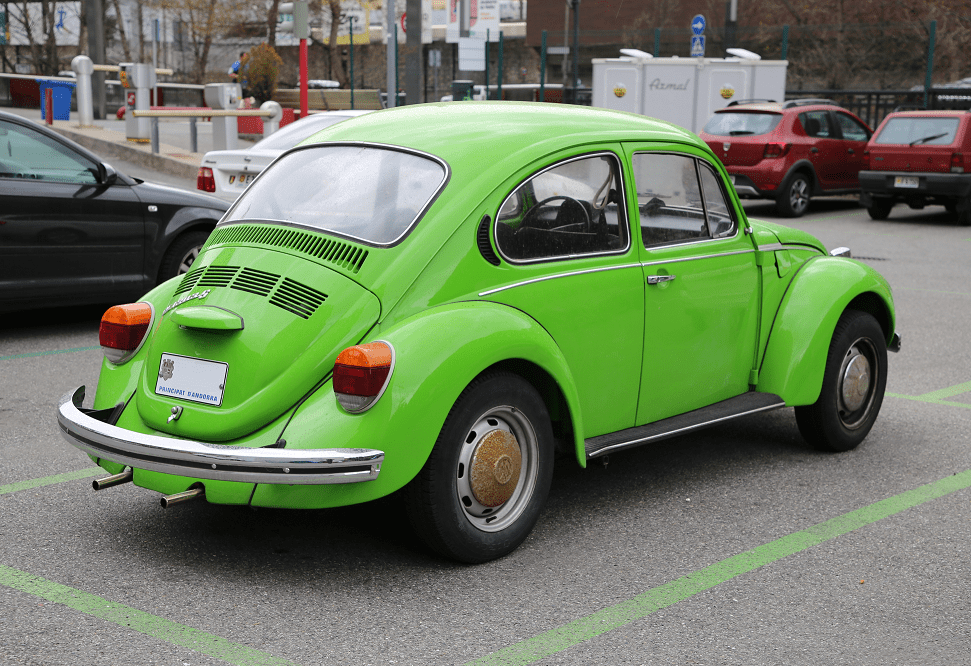Volkswagen 1303 S Type I. Green version
The Volkswagen Beetle—officially the Volkswagen Type 1, informally in German der Käfer (meaning “beetle”).
The need for a people’s car (Volkswagen in German), its concept and its functional objectives were formulated by the leader of Nazi Germany, Adolf Hitler, who wanted a cheap, simple car to be mass-produced for his country’s new road network (Reichsautobahn). Members of the National Socialist party, with an additional dues surcharge, were promised the first production, but the Spanish Civil War shifted most production resources to military vehicles to support the Nationalists under Francisco Franco.
Lead engineer Ferdinand Porsche and his team took until 1938 to finalise the design. Béla Barényi is credited with conceiving the original basic design for this car in 1925, notably by Mercedes-Benz, on their website, including his original technical drawing, five years before Porsche claimed to have done his initial version.
The influence on Porsche’s design of other contemporary cars, such as the Tatra V570, and the work of Josef Ganz remains a subject of dispute. The result was the first Volkswagen, and one of the first rear-engined cars since the Brass Era. With 21,529,464 produced, the Beetle is the longest-running and most-manufactured car of a single platform ever made.
Although designed in the 1930s, due to World War II, civilian Beetles only began to be produced in significant numbers by the end of the 1940s. The car was then internally designated the Volkswagen Type 1, and marketed simply as the Volkswagen. Later models were designated Volkswagen 1200, 1300, 1500, 1302, or 1303, the first three indicating engine displacement, the last two derived from the model number.















